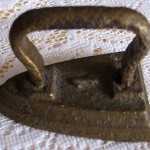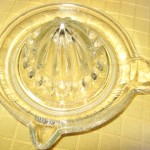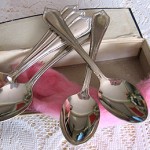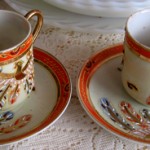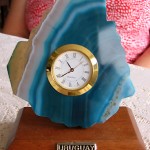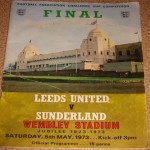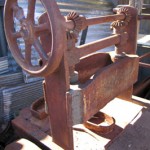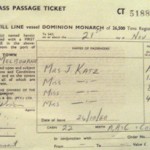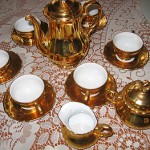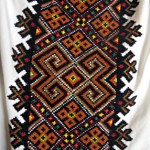Uruguayan
Montevideo, Uruguay
Montevideo, Uruguay on 9 August 1974
Sydney on 25 August 1974
Villawood for a couple of weeks.
With a friend at Summer Hill (Sydney’s inner west).
Polaroid at Newtown (Sydney’s inner west), cleaning and packing sunglasses.
GPO in Sydenham sorting letters and on information counter; owned a restaurant in Stanmore (both in Sydney’s inner west); worked in various capacities with the elderly, especially Spanish-speaking migrants.
I was born in Montevideo, Uruguay. My father was born in Spain and was an electrician by trade. My mother was from Brazil but had lived in Uruguay since the age of five. When they met, my parents were very young. They were married within a year of meeting each other and there were no regrets on either side. They had four daughters and my mother did not go out to work. [She] was a fabulous housekeeper and cook and I tried very hard to emulate her. I did not always succeed however and I can remember on at least one occasion my cooking was so bad that my mother gave the food to the dog! I improved with time and now am not such a bad cook at all.
I was educated in a Catholic school in Montevideo and loved it there and had a large circle of girlfriends. I was also helping in the church with the preparation of girls for their first communion, as well as with programs for the very poor. It was very rewarding for me to be able to help others who were not so fortunate. I loved dancing too and have very fond memories of the kindness shown to us there by the nuns.
I loved to study and after finishing school I decided that my vocation was to be in physiotherapy and took a course in it. I worked for a few months in a hospital during training but my father was very old-fashioned and did not approve. At that time in Uruguay, girls were not even allowed to go out with men unless they were chaperoned. I had been through it all with my older sister when I had to chaperone her and then when it was my turn to be chaperoned, I understood it.
I met my husband Adolfo at a party and was not even allowed to dance with him without my father’s permission. Permission was given and from there a friendship grew and we were married a-year-and-a-half later. The marriage was held in a beautiful church called Tierra Santa. We were to have a very happy marriage and raised three children here in Australia.
Uruguay was going through political turmoil as were many other South American countries. When the military took over, it was not pleasant to live there, especially if one was educated and thought about what was happening. The books that we read were censored so that we read nothing that may appear subversive.
Adolfo was a draftsman by trade and it was decided that we would come to Australia for two years to see how it would be for us. I did not like that, but we ended up going to Argentina and obtaining a visa to come to Australia, where we hoped we would be allowed to remain.
My brother-in-law came with us. The preparation was very exciting. So many questions about our new country-to-be, but it was very distressing at the airport when we had to farewell my parents and I wondered if we would ever see them again. I had brought quite a few belongings with me as I wanted to feel at home and be surrounded by these objects [which] would hopefully make me settle in more readily. Some of the possessions that I brought with me were from my mother and in particular I cherished the small brass iron which invoked so many memories and, although there was little intrinsic value in it, the lemon squeezer which my mother had used so many years in her cooking. The iron was used to pretend to iron my dolls’ clothes and is over 60 years old. My mother-in-law had given us a set of small coffee cups which were delicately painted and they are fondly cared for by me.
I also brought a set of silver spoons that I inherited from my mother and which were made in Uruguay. There is also a tall vase made from wood and beautifully decorated. It comes from the tourist town of Punta del Este on the Atlantic Ocean and has fond memories for me. Another much loved possession is a clock which is set onto a block of what I think is malachite. It is very beautiful and, as are all my other objects, made in Uruguay.
We packed our belongings and left Montevideo on 9 August 1974. I must say I was quite excited [and] was happy to be leaving such terror in my country, but nevertheless I would miss it all, especially my family. It was sad and I wondered what life would hand me.
We travelled by car to Argentina. From there we flew to Peru as a relative worked in travel and arranged a really interesting trip for us before we were to finally reach Australia. From Peru we flew to Los Angeles for a few days, and then from there to Hawaii, where we spent another few days. Then we were onboard the plane heading for Australia. We arrived on 25 August, about three weeks after having left Montevideo.
My initial observation, on looking down from the plane, was that all the houses had red roofs. That was strange for me. The other thing that was strange to me was that before we left, the plane we had to be ‘sprayed’. This had never happened at any of the other stop-offs.
On our arrival at Sydney Airport we found that it was very hot. We [were] transferred onto special buses that had been provided to take us to our accommodation. It was most surprising to find that it took such a long time to get to Villawood migrant hostel [in south-west Sydney], which was where we were to live temporarily. I thought that we must be going to the country to live and did not feel at all comfortable.
When we finally reached Villawood, my brother-in-law was separated off from us and I was afraid that he would be taken a long way away. Of course we found that we were given married accommodation, whereas he was to go to single quarters only a very short distance from us. Our room was quite small and had no cooking facilities. We were shown where the toilet and showers were and it was most upsetting to find that we had quite a walk outside to each. I also had much trouble with the foods we were served and could not eat very much of it. I was already very homesick and begged my husband to take me home. I even suggested that I clean out the plane for free to raise money for my fare home!
I had learnt and spoke a little English I thought, but no-one seemed to understand me. Of course the English that I had learnt was American English, which was so different to Aussie English. Even the people we met who came from other South American countries such as Chile spoke a different dialect of Spanish from ours. It was very embarrassing and often confusing.
After a couple of weeks it all became too much for us and we went to stay at Summer Hill [in Sydney’s inner west] with a friend, who took us out looking for a flat where we could be on our own. We found one on Liverpool Road at Summer Hill and it had a swimming pool. It had no furniture though, but a nice kitchen with a dishwasher. It also had a bathroom and laundry. We slept on the carpet at first but we were happy. Then our friend took us to Waltons department store and we bought the basics in furniture and had to pay for it at $10 a month.
My husband got a job straightaway with the Water Board and I went looking myself for work. I looked in the paper for a job in massage but it turned out to be a different type of massage to [the one] wanted! Then after a few days I found employment at Polaroid in Newtown, where I worked at cleaning sunglasses and boxing them. The work was very hard on my hands and I only stayed about four months.
My next job was with the GPO (General Post Office) at Sydenham where I was employed sorting mail. In the meantime I was learning English as quickly as I could and then after a few years they transferred me to the GPO in Sydney where I assisted migrants with their postal and telegraphic problems. I liked it there but my husband decided that he wanted to buy a restaurant in Parramatta Road at Stanmore. We called it ‘Bienvenido,’ which means ‘welcome’ in Spanish. We provided mainly South American meals but also some Italian dishes as well.
We bought the unit in which we had been living and then sold it and bought a house in South Strathfield. We also sold the restaurant and opened another at Regents Park [not far from Villawood].
I was keen to get into physiotherapy and went to the Summer Hill Nursing Home, where I was employed whilst studying diversional therapy at Lidcombe College. I loved working there and especially loved to take the residents on outings. From there I went to south-west Sydney as Coordinator of Dementia Day Care, and was later offered the position on a seniors program at Fairfield Council, where I remained for two years. It was beautiful and I loved working there, but I left to work as Manager at Rooty Hill at the new hostel and home [in western Sydney] for Spanish-speaking people, where I am still employed. The work is very rewarding and it fills a few days a week.
In 2000, I was nominated to become a Commissioner in the Community Relations Commission (formerly the Ethnic Affairs Commission of New South Wales) and I remained in that position for six years.
In April 2008, my husband died suddenly and my whole world came crashing down. He had so much more to give. His parents had earlier come to Australia and opened a butcher’s shop at Yennora, but they had returned to Uruguay. I did get to see my own parents many times over the years too. Now I have my children and two grandchildren to occupy my life.
I would never think of returning to Uruguay to live as this is my home and I have my family here. The culture here is very different to that of Uruguay, but this country has opened its doors to me and I would never leave it.





